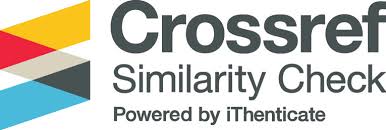Increasing Purchase Intention through Storytelling Marketing and Experiential Marketing with Brand Equity as an Intervening Variable
(Study of Rangrang Weaving Craftsmen at IKM Ngurah Gallery, Tanglad Village, Nusa Penida, Klungkung Regency, Bali Province)
Abstract
Purpose – Rangrang weaving is a traditional craft product inherited from the ancestors of Nusa Penida, Bali. IKM Ngurah Gallery as a rangrang weaving company, understands the importance of implementing marketing strategies. Proper storytelling and experiential marketing will have a positive impact on increasing consumer purchasing intentions.
Methodology – This research used descriptive quantitative methods, the sample size was 114 respondents, data collection techniques used questionnaires, and data were analyzed using SEM-PLS.
Findings – The result of the research show that storytelling marketing influences purchase intention and experiential marketing influences purchase intention. Storytelling marketing influences brand equity and experiential marketing influences brand equity. Brand equity influences purchase intention. The brand equity variable has a mediating role between the storytelling marketing variable and purchase intention. The brand equity variable has a mediating role between the experiential marketing variable and purchase intention.
References
Andreani, Fransisca. (2007). Experiential Marketing (A Marketing Approach). Journal of Marketing Management, Vol.2, No.1.
Asfina, W. (2020). The Influence of Experiential Marketing, Customer Experience, and Brand Equity on Repurchase Intentions for MS Glow Products in Padang City. Journal of Economics and Business, 3(3), 391-395
Cassar, M. L., Caruana, A., & Konietzny, J. (2021). Facts or stories? The impact of website content on narrative believability and purchase intention. Journal of Marketing Communications, 1-20.
Hamid, RS, & Anwar, SM (2019). Variant-Based Structural Equation Modeling (SEM): Basic Concepts and Applications with the SmartPLS 3.2.8 Program in Business Research. PT. Indonesian Writers Incubator.
Hapsari, Annisa Rahmadani., Refius Pradipta Setyanto., & Weni Novandari. (2022). “The Effect of Storytelling Marketing on Purchase Intention with 93 Empathy as a Mediating Variable.” 12(1).
Haryono, S. (2016). SEM Method for Management Research with AMOS LISREL PLS. PT. Principal Personnel Intermedia.
Krakow, M.M., Yale, R.N., Jensen, J.D., Carcioppolo, N., & Ratcliff, C.L. (2018). Comparing mediational pathways for narrative- and argument-based messages: Believability, counterarguing, and emotional reactions. Human Communication Research, 44(3), 299-321.
Lowe, S. (2012). Industrial Marketing Management. IMP Research, 41, 706– 714.McKee, R. 2003. Storytelling that moves people. Harvard Business Review. Review 81(6), 51-55.
Papadatos, C. (2006). The Art of Storytelling: How Loyalty Marketers Can Build Emotional Connections to Their Brands. Journal of Consumer Marketing. 23(7), 382-384.
Rangkuti, F. (2014). The Power of Brands (Managing Brand Equity and Brand Development Strategy). Jakarta: PT Gramedia Pustaka Utama.
Rizkia, R., & Oktafani, F. (2020). The Influence of Storytelling Marketing on Purchasing Decisions Through Brand Equity as an Intervening Variable in Gojek in the City of Jakarta. Journals of Telkom University.
Sartini. (2004). Exploring Local Wisdom of the Archipelago: A Philosophical Study. Journal of Philosophy, 14(2).
Savitri, C., Faddila, SP, Irmawartini, Iswari, HR, Anam, C., Syah, S., Mulyani, Schmitt, BH (1999). Experiential Marketing How To Get Customers to Sense, Feel, Think, Act and Relate to Your Company and Brand.
SR, Sihombing, PR, Kismawadi, ER, Pujianto, A., Mulyati, A., Astuti, Y., Adinugroho, WC, Imanuddin, R., Kristia, Nuraini, A., & Siregar, MT (2021). Multivariate Statistics in Research. Widina Bhakti Persada Bandung.
Srivastava, Rajesh Kumar. (2008). How experiential marketing can be used to build brands – a case study of two specialty stores. Innovative Marketing, Volume 4, Issue 2.
Sudarsana, IW, Koriawan, DG, & Mursal. (2013). Nusa Penida Rangrang Woven Cloth in Pejukutan Village, Nusa Penida District, Klungkung Regency. Undiksha Journal Vol.2 No.1.
Sudarsana, IW, & Koriawan, GEH (2014). RANGRANG WEAVING IN THE VILLAGE PEJUKUAN NUSA PENIDA DISTRICT, KLUNGKUNG DISTRICT. Undiksha Fine Arts Education Journal, 4(1).
Wahyuni, IAKV, & Pradnyana, IMA (2018). Documentary Film on Nusa Penida's Rangrang Woven Cloth: "The Forgotten Ampel's Textile from Paradise Island." National Journal of Informatics Engineering Education: JANAPATI, 7(2), 177-191.
Yang, Zhi-ying., & He, Ling-Yun. (2011). Goal, customer experience and purchase intention in a retail context in China : An empirical study. African Journal of Business Management, Vol. 5(16).











